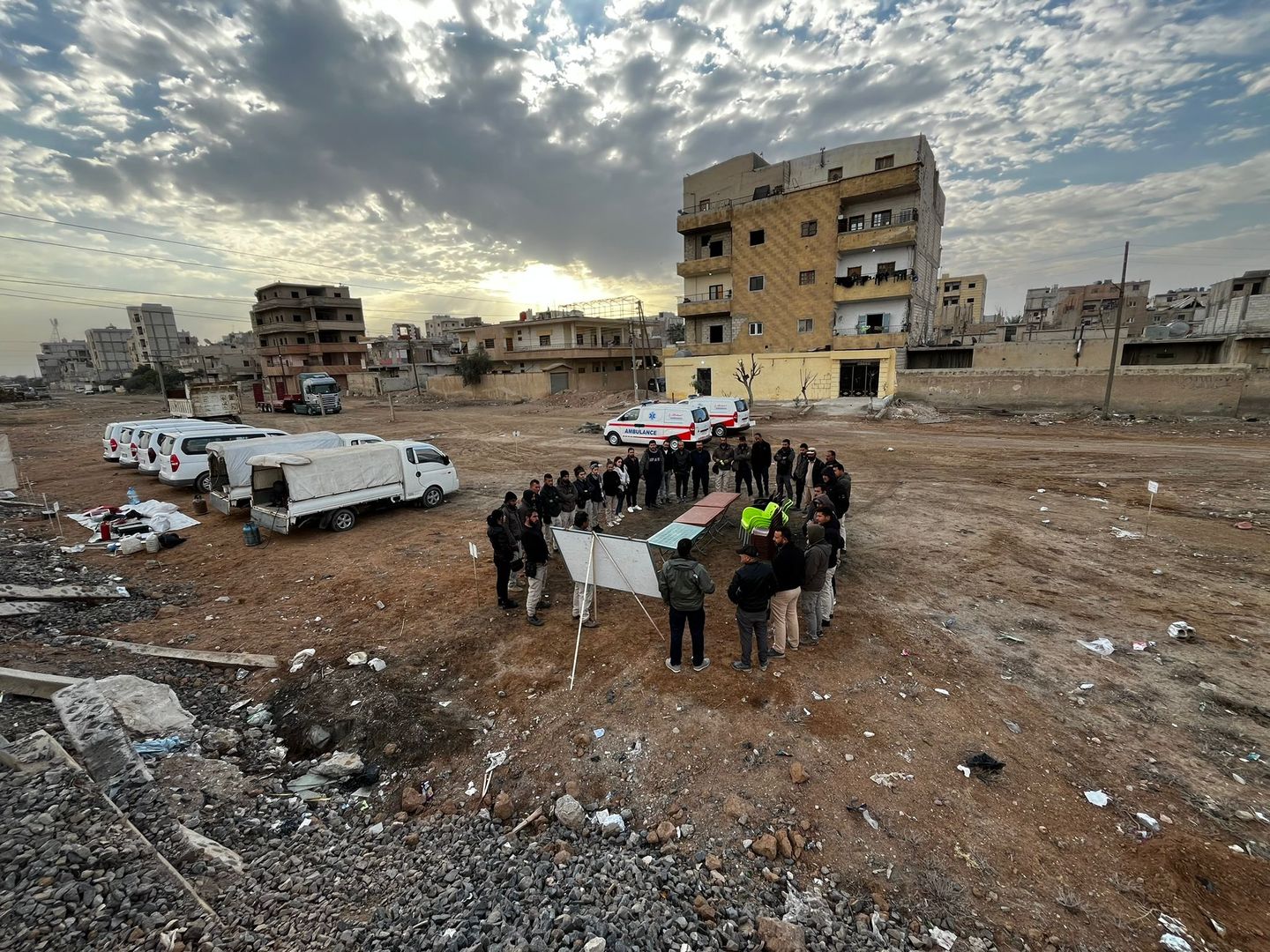Northeast Syria has witnessed intense conflict and violence, including the fight against the Islamic State and the subsequent military operations to regain control of the region. And, more recently in January 2024, Turkish airstrikes against critical infrastructure.
Areas where heavy fighting and aerial bombardments took place, including al-Raqqa City, were severely affected and remain contaminated in mid-2024. The presence of explosive remnants of war (ERWs) and improvised explosive devices (IEDs) pose significant and immediate threats to the local population – and hampers farming and other economic activities.
“A total of 3,471 civilians, including 919 children, have been documented as killed by anti-personnel landmines in Syria in the last 13 years”The Syrian Network for Human Rights (SNHR)
DCA presence in Northeast Syria
DCA Syria has been working in Northeast Syria since the end of the Syrian Civil War in 2017, where Islamic State was defeated, attempting to clear land of explosive contamination with support from the European Union.
The core aim being to create a safe environment, enabling social and economic development for Syrians to return and rebuild their homes and communities.
From battlefield to cotton field
Two DCA Explosive Hazard Search (EHS) teams conducted Battle Area Clearance (BAC) to clear explosive contamination in the rural part of Tabqa. Tabqa is a small village on the outskirts of al-Raqqa city. The area was an outpost for Islamic State (IS) during their occupation of al-Raqqa.
The Syrian Defence Forces drove Islamic State out of the area but the explosives left scattered in the area would devastate local farmers.
As a result of the contamination, the farmers were unable to plough their fields to grow wheat and grain. This had a huge impact on their income and general stability. DCA teams cleared all items of contamination and handed the area back to the farmers to once again begin cultivation.

Rubble inspection task
In October 2023, DCA received an official request from the ‘Office of Labour’ and the ‘Humanitarian Affairs Office’ in al-Raqqa to clear and remove contaminated rubble from an abandoned and partially destroyed building previously occupied by Islamic State, and assist in its rehabilitation.

DCA’s non-technical survey (NTS) team visited the site, and after collecting information and interviewing community members, it was ascertained that it had previously been used as a warehouse and a workshop for repairing machinery by Islamic State – and was abandoned when they were driven out of town.
Some community members also reported the presence of Explosive Ordnance (EO) contamination.
This was confirmed during the systematic rubble search where several explosive hazards were found, including one Improvised Explosive Device (IED) and two mortars.
The DCA shelter team received the site from the Humanitarian Mine Action team after completion of the clearance operations.
From rubble to rehabilitation of student union
The initial steps involved assessing the building to ensure its safety and stability. Subsequently, the team commenced the preparation of the bill of quantities and the rehabilitation plan before initiating the work on the site.

This included repairing the main building, which involved removing, rebuilding, and painting damaged walls, installing doors, windows, and electricity.
The team also focused on providing roof insulation and constructing a separate gender wash block, equipped with all necessary sanitation extensions. To ensure protection and safe access to the building, an external yard was established, adding external doors and metal protections.
Holwa Salem Al-Ahmad – making Syria safe again
Holwa is a mother of five children and a grandmother to two. She was formerly a cleaner for the DCA Syria Program – but she wanted to do more and confidently expressed her desire to join one of the Explosive Hazard Search (EHS) teams and become a searcher.
An opportunity arose to join the training and accreditation of a newly formed group of searchers and her performance and strong character stood out. It rapidly became apparent to all who interacted with Holwa that she had a natural ability to lead.
Holwa started off as a searcher but was promoted in 2022 after only two months and became DCA Syria’s first female team leader.
Since then, she has gone from strength to strength to become a highly respected and reliable team leader. Holwa leads a team of ten searchers, both Arab and Kurdish, in the Explosive Hazard Search Team 2 that conducts clearance and Non-Technical Surveys in Northeast Syria.

Asked of the importance of women working in Mine Action, Holwa responded, “Syrian women are strong. We are proud to do a job that is mainly viewed as a male profession and we stand side by side as colleagues to make Syria a safe place again, regardless of gender or beliefs.“
What’s next
DCA Syria’s EHS teams continue to locate, remove or destroy explosive hazards in both rural and urban environments throughout Northeast Syria. Although it would initially appear that the community is returning to some form of normality, there are still thousands of undiscovered and uncleared items of Unexploded Ordnance (UXO) and Explosive Remnants of War (ERW) and Improvised Explosive Devices (IEDs).
The immediate threat therefore still lingers to the people of Northeast Syria – and the work to remove it is far from over.


